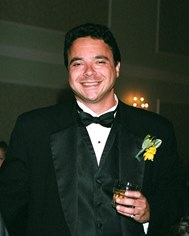 With “Rogue One: A Star Wars Story,” “Godzilla” director Gareth Edwards has crafted a love letter to fans of George Lucas’ 1977 film “Star Wars.”
With “Rogue One: A Star Wars Story,” “Godzilla” director Gareth Edwards has crafted a love letter to fans of George Lucas’ 1977 film “Star Wars.”
In the almost 40 years since the original “Star Wars,” we’ve been treated to seven Star Wars films and know Lucas’ Skywalker storyline by rote, so “Rogue One” comes as a fresh stand-alone sidebar to the saga by giving us a separate storyline during the timeframe in which our love for the series first began. Much like Hollywood studios treated audiences to countless films depicting individual battles of America’s victory in World War II, Edwards uses “Rogue One” to depict the victorious battle waged by the Rebel Alliance to seize the architectural designs of the Imperial Empire’s ultimate weapon, the Death Star. As we know from the introductory title crawl in the original “Star Wars,” the Rebels were already in possession of these plans that allowed Rebel X-Wing fighter pilot Luke Skywalker (Mark Hamill) to locate the weakness within the Death Star’s design and take that one-in-a-million shot to blow it to smithereens. So, in the time when Luke was staring at the two suns setting over Tattooine before meeting Obi-Wan or knowing what the Force was, the Rebel Alliance was battling for acquisition of those Death Star design plans- that’s the story of “Rogue One.”
As “Rogue One” opens, we meet Galen Erso (Mads Mikkelsen), an engineer for the Empire whose design of their Death Star weapon makes him realize he doesn’t want to be responsible for completing work on this “planet killer.” Though his conscience makes Galen flee with his wife and daughter, the Imperial forces, led by director Orson Krennic (Ben Mendelsohn), quickly find him. Galen is seized to finish the Death Star’s completion; his daughter, Jyn, escapes and is rescued in hiding by Galen’s friend, freedom-fighter Saw Gerarra (which I guess is “Star Wars-speak” for Che Guevara), played by Forest Whitaker. Jyn grows up a rebel under Saw’s tutelage; she disguises her identity (the name Erso’s synonymous with Death Star-designer).
Galen Erso, however, has retained his goodwill: within the Death Star, he has secretly built-in a design weakness enabling its destruction. Erso gives these plans to fellow sympathizer Imperial pilot Bodhi (Riz Ahmed), who Erso entrusts to bring to Saw Gerrara. The now-grown Jyn (Felicity Jones), apprehended by Imperial forces but freed by the Rebels who know her true identity, is given a mission: the Alliance, knowing of the Death Star but not yet knowing Erso has sent Bodhi with the plans, tasks Jyn with locating Saw Gerrara to lead them to her father, who can help them destroy the Death Star.
What follows in “Rogue One” is everything you’ve come to count on from the Star Wars franchise- cool special effects in a sci-fi soap opera. But because “Rogue One” bookends to the exact time when the original “Star Wars” begins, we’re treated to what director Edwards and writers Chris Weitz and Tony Gilroy admirably recreate in love of Lucas’ original film: apart from seeing Darth Vader, C3PO and R2D2 again, we also get the chessboard with the monster game pieces, hologram messages, the Imperial AT-AT walkers used on the ice planet Toth in “The Empire Strikes Back” and, using CGI reconstruction, get to see actors from the original film who’ve passed away or younger versions of aging actors from the original who look like they’re about to. Even “Rogue’s” one character that embodies the Jedi force- a blind Asian who fights with an Aikido stick- I took to be a sly tribute to the movie Lucas said was the inspiration for “Star Wars”- Akira Kurosawa’s 1958 film, “The Hidden Fortress.”
While “Rogue One” may just be a stand-alone film in the Star Wars galaxy, it’s a loving nostalgic recreation of the time period when we first entered its universe. A cinematic Christmas present for the Star Wars fan, “Rogue One” leaves us with the feeling that a long time ago doesn’t have to seem that far, far away.
